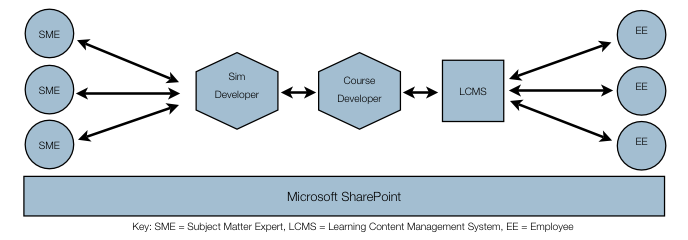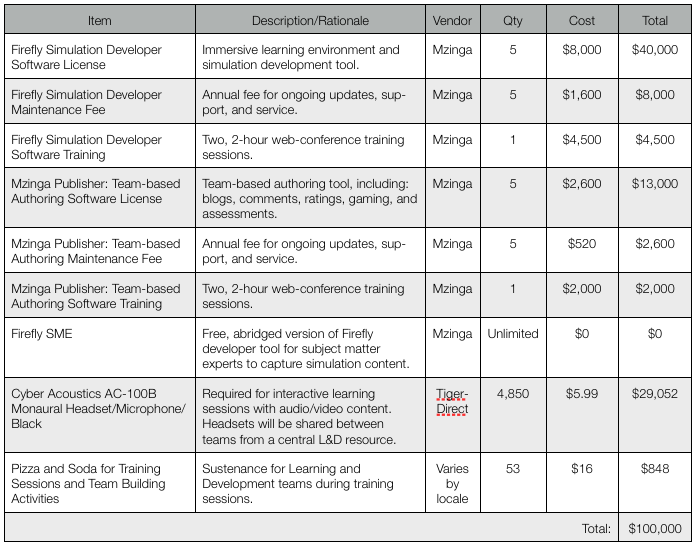Spend $1 Million on Technology for your Institution
Assignment: Bad news. Your budget has been slashed to $100,000. Get your chin off the floor and see what you can salvage while being mindful of your goals.
Project Proposal
(Download PDF)
Prepared for: Gary S. Stager, Ph.D.
Prepared by: Daniel Wood
June 9, 2009
Proposal number: EDC 667 – Assignment 1 – Stage 2 (Revised Budget)
Executive Summary
Problem Statement
Current learning opportunities for employees lack authenticity, hands-on experience, and the social interaction necessary to fully prepare them to be engaged in their role and become effective members of a learning organization. As a consequence, employees learn the majority of their role on the job. While on-the-job training is valuable, it often leads to a negative experience for the employee and the customer (internal or external), and ultimately impacts the organization due to lost time and investment. Learning has been proven to be a social activity that is based in experience within a given context. When training becomes disassociated with that context, and does not include opportunities for the application of knowledge, it loses effectiveness and the results are poor learning experiences and business results. Compounding the issue is the lack of connection between knowledge building, delivery, and sharing teams, processes, and systems. There is a need for the broad learning and development community to come together to develop a coordinated, collaborative approach to creating and supporting employee curricula and development paths.
Proposed Intervention
The Mzinga Firefly Simulation Developer and Publisher are recommended as additions to existing computer-based learning technologies to meet the current challenges for employee learning and social knowledge building and sharing processes. This solution would include the addition of the new Firefly development and publishing software to create immersive learning environments that allow for experience-based learning of new concepts. Tying this software to our exiting Learning Content Management System (LCMS) will help maintain costs within budgetary requirements while still offering employees the type of experiential learning necessary to help them develop adaptive expertise in support customers. This solution will include opportunities to engage in social knowledge building through a variety of social learning technologies, including discussion blogs and comment and rating systems. In lieu of the full Mzinga Social Learning Suite, the current LCMS and Microsoft SharePoint will be leveraged to support the development of content through a process to be defined by the Learning and Development Community of Practice. This community has been meeting in its formal organization for the past six months and is connected through the SharePoint in a way that supports ongoing communication and operating mechanisms to support transparent, collaborative knowledge building and sharing across the organization. This community interaction will be essential, as the budgetary limitations will require that fewer software licenses be purchases and that the community work together to build content using the free Firefly SME version of the software and then passing the content to a designated designer and/or publisher for final course building and publishing. A model of the potential interaction is shown in the diagram below.
Measures of Effectiveness
The effectiveness of this approach to employee learning and development will be measured through the following qualitative and quantitative data:
Qualitative:
- Employee sentiment – Do employees find the learning to be engaging, challenging, enjoyable, and effective?
- Customer response – Are customers responding more positively to employee interactions, based on survey data?
- Leadership feedback – Are leaders seeing a change in the culture of their teams that is oriented to learning?
Quantitative:
- Key Performance Indicators including, but not limited to, the following:
- Customer Issue Resolution (CRES)
- Customer Satisfaction (CSAT)
- Quality Assessment (QA)
- Average Handle Time (AHT)
- Sales-Per-Call (SPC)


